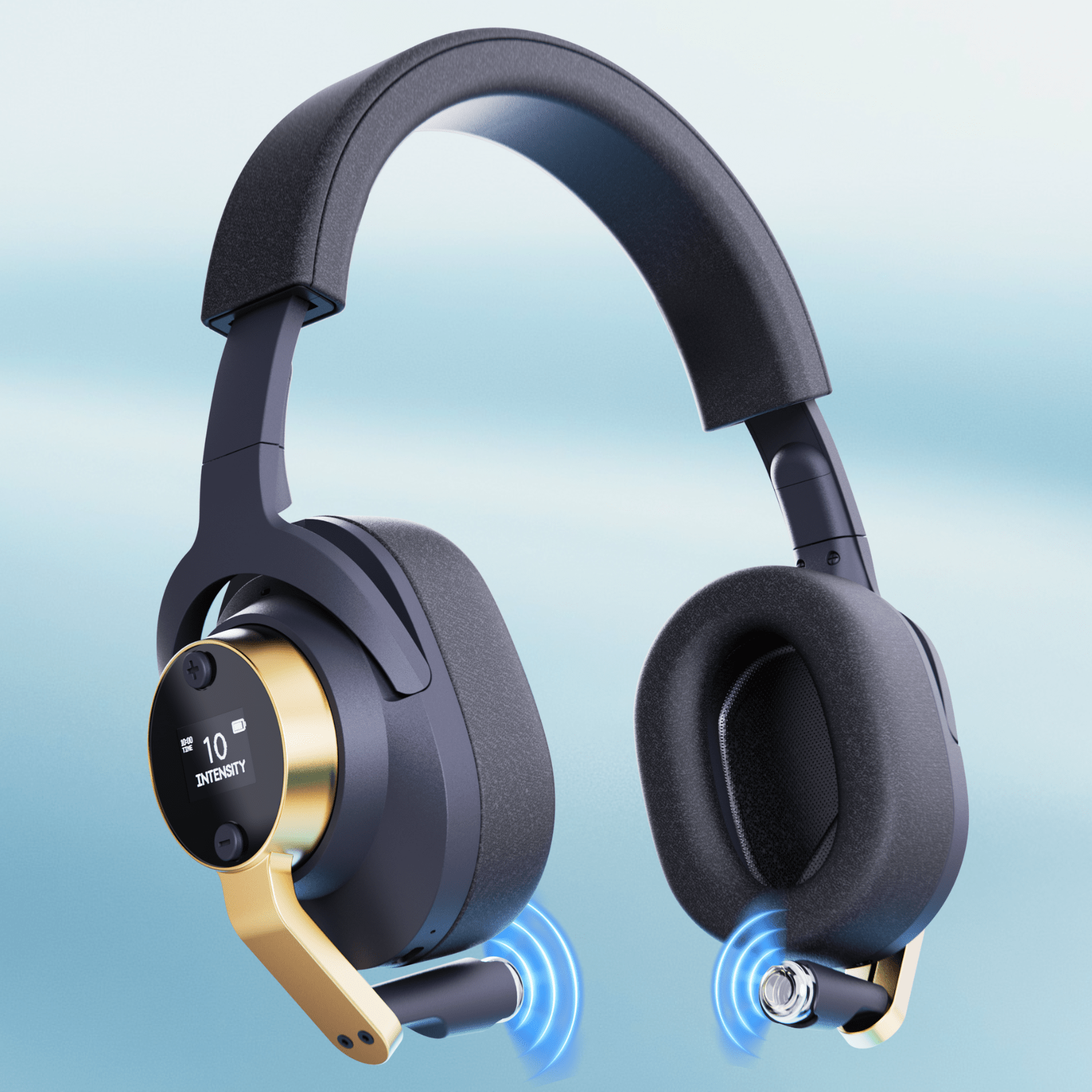Your vagus nerve is like the control center for your body’s stress and recovery system. It connects your brain to nearly every major organ and plays a crucial role in regulating heart rate, digestion, immune response, and your ability to stay calm under pressure.
But when it’s not working properly, everything starts to break down—physically, emotionally, mentally.
Here are 10 signs your vagus nerve might be underperforming, plus actionable steps (natural and high-tech) to help restore balance and build long-term resilience.
⚠️ 10 Signs of Poor Vagal Tone (Vagus Nerve Dysfunction)
1. You’re constantly anxious or overwhelmed
If you’re stuck in a constant state of fight-or-flight—racing thoughts, shallow breathing, tension—you may have low vagal tone. A well-functioning vagus nerve helps shift you into “rest-and-digest” mode.
2. You have gut issues (bloating, indigestion, IBS)
The vagus nerve is a major controller of digestive processes. Poor vagal tone can slow down gut motility and disrupt the gut-brain connection, leading to constipation, nausea, or IBS-like symptoms.
3. You get lightheaded when standing up (POTS-like symptoms)
Poor vagal tone may impair your autonomic nervous system’s ability to regulate blood pressure and heart rate, making you feel dizzy or disoriented when you change positions quickly.
4. Your heart rate variability (HRV) is consistently low
Low HRV is a sign that your body struggles to shift between sympathetic (stress) and parasympathetic (recovery) states. Your vagal tone directly controls HRV.
5. You experience frequent headaches or migraines
Especially tension-type or stress-related headaches. Vagal dysfunction often contributes to chronic pain syndromes and poor inflammatory regulation.
6. You have trouble swallowing or experience a lump-in-throat feeling
Because the vagus nerve innervates the muscles in your throat and esophagus, dysfunction can interfere with smooth swallowing or trigger the feeling of something stuck.
7. You get sick often or take forever to recover
Your vagus nerve modulates inflammation and immune signaling. Low tone can lead to heightened inflammation and a sluggish immune system.
8. You feel emotionally numb or detached
The vagus nerve plays a central role in neuroception—your body’s subconscious detection of safety. Low tone can make you feel emotionally shut down, disconnected, or overly guarded.
9. You struggle with insomnia or restless sleep
Without enough vagal tone to “power down,” your nervous system stays wired at night. This means elevated cortisol, racing thoughts, and shallow breathing.
10. You can’t calm down no matter what you try
Breathwork, meditation, and mindset work are great—but if they never seem to “stick,” your vagus nerve might be too weak to fully shift your system into calm mode.
✅ How to Stimulate Your Vagus Nerve Naturally (Free Methods)
Here are science-backed ways to strengthen your vagal tone without devices:
🧘 1. Slow Breathing (Especially Long Exhales)
6–10 breaths per minute with longer exhales activates the parasympathetic system.
-
Try: Inhale 4 seconds → Exhale 8 seconds
-
Do: 5–10 minutes per day
🚿 2. Cold Exposure
Cold showers or splashing cold water on your face stimulates the vagus nerve via the trigeminal and auricular branches.
-
Try: 30 seconds of cold at the end of your shower
🎶 3. Humming, Chanting, or Singing
These vibrate your vocal cords and stimulate the vagus nerve through the larynx and auricular branches.
-
Try: Humming “OM” for 2 minutes
-
Sing in the car or shower—yes, really
😮💨 4. Gargling Vigorously
A weird but effective exercise. Gargling contracts the muscles innervated by the vagus nerve.
-
Try: Gargle water for 30 seconds, 1–2x/day
🤝 5. Social Connection
Genuine, face-to-face connection increases vagal tone via co-regulation. Laughing and physical touch also stimulate the vagus nerve.
⚡ High-Tech Vagus Nerve Stimulation (For Faster, Deeper Results)
If you're looking for faster, more reliable ways to activate your vagus nerve, non-invasive VNS devices are game-changers.
🎧 1. Hoolest Pro

-
What it does: Sends targeted electrical stimulation to auricular vagus nerve branches
-
Feels like: An “off switch” for anxiety—calm within 1–3 minutes
-
Benefits: Boosts HRV, calms panic, improves sleep, and strengthens vagal tone over time
🔥 Clinically validated with 94% effectiveness in high-stress professionals like firefighters and police officers.
🔗 Learn more: hoolest.com
🎯 2. Pulsetto, GammaCore, or Neuvana
Other options exist, but many require messy gels, Bluetooth pairing, or weaker stimulation. Hoolest outperforms most in ease and speed of relief.
🧠 Why Vagus Nerve Training Needs to Be Consistent
Think of vagus nerve stimulation like going to the gym. One session won’t make you resilient—but consistent daily use will.
“The vagus nerve is the gateway between stress and recovery. You have to train it like a muscle.”
— Dr. Nick Hool, Biomedical Engineer & Founder of Hoolest
Whether you’re using breathwork, cold exposure, or devices like Hoolest, the key is daily repetition. This builds neuroplasticity and rewires your nervous system to stay calm under pressure.
Summary Checklist: Are You Experiencing Poor Vagal Tone?
✅ Anxiety or panic episodes
✅ Gut problems
✅ Dizziness/lightheadedness
✅ Low HRV
✅ Frequent illness
✅ Migraines or headaches
✅ Insomnia
✅ Emotional detachment
✅ Trouble swallowing
✅ Chronic stress response
Final Thoughts
Your vagus nerve is the brake pedal for your nervous system—and when it’s not working properly, life feels like it’s stuck in overdrive. The good news? You can retrain it.
Whether you start with slow breathing or dive into tech like Hoolest, the goal is to make calming your nervous system effortless and repeatable.
Because you don’t just need to relax once—you need to stay resilient for life.
📩 Want more actionable science-backed tips like this?
Subscribe to the Hoolest Newsletter for tips, tricks, and exclusive offers.
🔗 Explore Hoolest Pro → Shop Now


